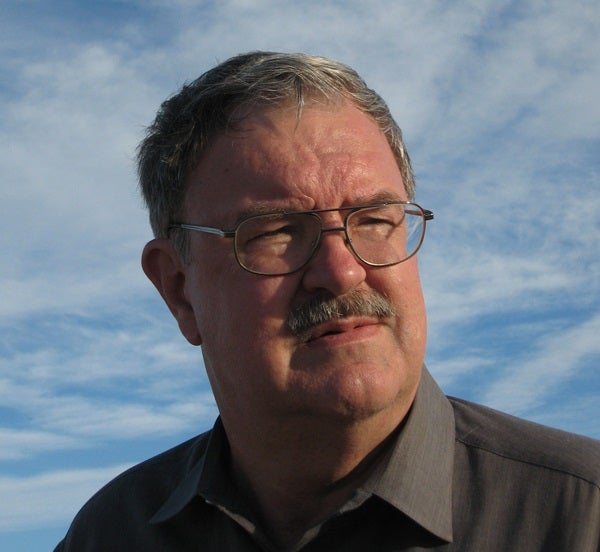In his winning entry, “Torrid Mercury’s icy poles,” from Astronomy magazine’s December 2013 issue, Oberg expertly explores the history of the search for the innermost planet’s water ice and what the MErcury Surface, Space ENvironment, GEochemistry, and Ranging (MESSENGER) spacecraft, launched in 2004, is revealing. The saga of water ice hiding in the shadows on Mercury ranks among the most fascinating chapters in the story of the solar system’s birth and evolution. (You can read the full award-winning text below.)
Oberg is a science journalist, space consultant, and retired “rocket scientist.” He spent the first 22 years of his career as a space engineer at NASA’s Johnson Space Center in Houston, where he specialized in space shuttle operations and orbital rendezvous. Oberg has authored some two dozen books about all aspects of space flight for both the astronomy-interested layman and NASA’s training program. He also has written more than 1,000 magazine, newspaper, and website articles. His work has appeared in Astronomy, The Wall Street Journal, Scientific American, OMNI, Popular Science, Popular Mechanics, and others. In addition, Oberg has served as the NBC News space consultant for a decade. He is considered an expert on the Russian and Chinese space programs and U.S. space policy, and he recently spent 10 days inspecting the North Korean space and rocket program for NBC.
Oberg earned a Bachelor of Arts in mathematics from Ohio Wesleyan University, a Master of Science in applied math from Northwestern University, and a Master of Science in computer science from the University of New Mexico. After his Northwestern education, he served in the United States Air Force until they loaned him to NASA and never got him back.
Oberg has been a contributor to Astronomy since its second year. His most recent article for the magazine prior to the prize-winning Mercury piece was the June 2013 cover story about the Chelyabinsk fireball.










